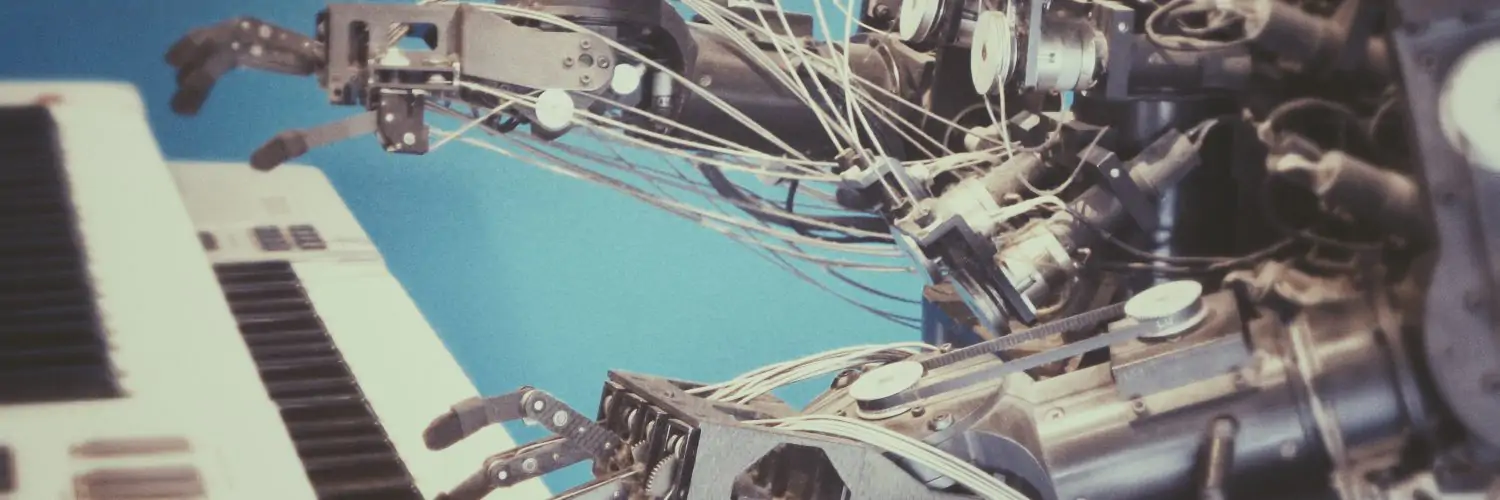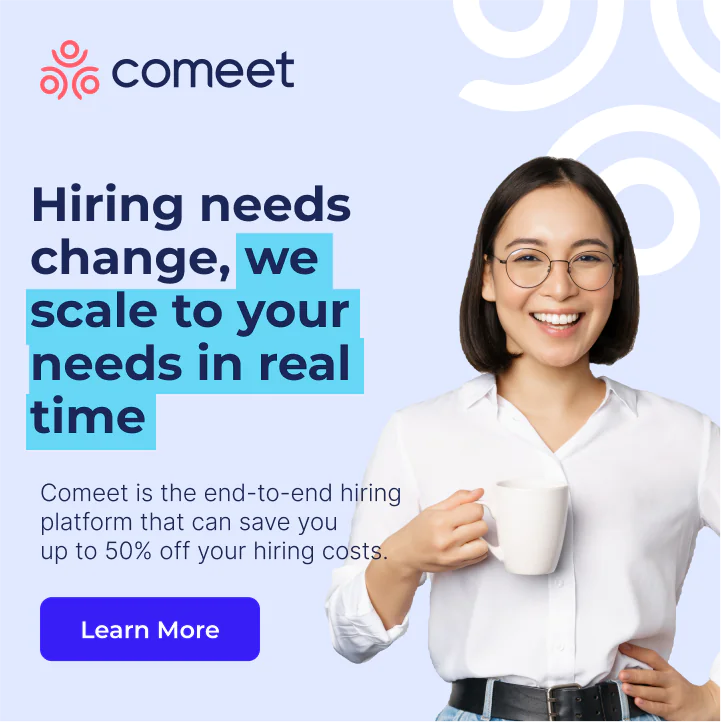Everyone who is hiring today is talking about automating their hiring processes more extensively. But before we explore the topic in depth, let’s define what recruiting automation is . . .
Recruiting automation means using computer programs and applications to perform part of your hiring process without human interaction.
Whether computer applications are helping you at just one stage of your hiring process or in many, that means you are using recruiting automation.
That was simple to define, right? And now that we have defined our terms, let’s move on!
Why Would Anyone Want to Use Automate Recruiting?
That’s a fair question. There are many reasons to do it. Some of them are obvious, others more subtle . . .
Low-level, obvious reasons . . .
- Automated recruiting performs tasks you don’t want to do. Computers can free you from doing low-level functions and enable you to concentrate on more sophisticated issues. For example, do you really want to sit at a terminal and enter all kinds of data about where applicants found your jobs, when you interviewed them, how they scored on aptitude tests, and lots more? If you are using an automated recruitment system, you don’t have to perform those functions. That means you can concentrate on higher-level activities like analyzing what is happening at every stage in your hiring process, whether you are attracting the right candidates, whether too many potential hires are dropping out of your process before you have offered them jobs, and more.
- Automated recruiting saves money by performing functions that you would otherwise have to pay people to do. Do you really want to hire data-entry people when your automated system can do everything they could do for you? Or do you want to hire support-level employees to call applicants on the phone and schedule job interviews with them? Of course you don’t want to pay people to perform low-level tasks like those. And thanks to automated recruiting, you won’t need to.
High-level reasons . . .
- Automated recruiting builds a repository of information that all the members of your hiring team can access. Information about your applicants, how they did on interviews, etc., isn’t sitting on one laptop that only one person uses. It’s available to everyone who needs it, on a need-to-know basis.
- Automated recruiting eliminates geographical divisions and barriers. A single system can automate your hiring processes, whether you are hiring in one company location or dozens that are spread across the country. The result is that you, as hiring manager, can optimize and manage all your hiring processes from just one location.
- You can use analytics to understand everything that is taking place at every step of your hiring process. If the jobs you are posting on one job board are generating twice the number of applications that you are getting from another, you will know that in real time and can adjust your hiring campaign accordingly. If a large percentage of applicants are failing to accept your job offers you will know that too – and you will be able to dig deeper into your data and understand why.
- You can develop metrics to analyze whether the people you have hired have turned out to be well suited to their jobs or not. And if you have been hiring the wrong people, you can dig into your data and understand why.
- Your hiring engine can be optimized so it will work better in the future. And because you will have systems in place for doing what you do, you can start recruiting for new jobs faster.
- You won’t have to spend days writing reports on the effectiveness of recent hiring campaigns, because reports are built into your automated hiring system. You can access the data you are looking for, dig into it, and analyze it in a number of ways.
Why Are Companies Being Drawn to Recruitment Automation?
We have explored some of those reasons in the preceding few paragraphs. But to take it to a more granular level, companies are being drawn to recruitment automation for a more fundamental reason . . .
The competition to recruit and hire good employees is greater than it has ever been before.
And because the competition is so intense to hire good workers, companies are turning to recruitment automation. It helps them hire better employees and maintain a competitive edge in the marketplace.
Are Recruiting Automation and Artificial Intelligence (AI) the Same Thing?
That’s a good question. The answer to it is a bit on the subtle side . . . .
Recruiting automation systems use AI technologies, but they are not the same thing as AI
Recruiting automation systems can use AI functionalities like predictive diagnostics (to predict which applicants are most likely to be good employees) and voice recognition (to gather applicant data over phone lines). But automated recruitment systems are not AI per se; they are larger systems that embody some AI capabilities.
Here’s an analogy that helps explain it. A car engine contains a number of different components such as an oil pump, a fuel injection system, spark plugs, and more. Similarly, an automated hiring platform contains a number of different components, many of which employ AI-based technologies.
What’s the Downside to Automation?
You were probably waiting for us to address this question, because there are potential downsides to using automation in the recruitment process. How can that be, when there are so many benefits?
Let’s take a closer look at some of the pitfalls to be on the lookout for . . .
The Hiring Process Can Become Depersonalized . . .
Yes, automated hiring platforms offer features like chatbots, automated follow-up communications with candidates, and more. But remember that the members of your hiring team should also take steps to build congenial, personalized, one-on-one relationships with candidates. They should pick up the phone and say hello or send a personalized follow-up email as soon as an interview is over. Even if you are using automation, it is important to remember to build personal relationships with applicants.
Automated Recruitment Can Prevent People from Using their Intuition . . .
Analytics and data will consistently help the people on your hiring team make better hires. But there will also be times when someone on your team will simply have an intuitive belief that a particular candidate would be perfect for a job you are trying to fill. Even if there is insufficient data to support an intuitive belief like that, there should still be a way for your team member to express it and act on it. Hiring people, after all, is not entirely about analyzing data. It is an art as well as a science.
The Mole Syndrome Can Infect Your Team . . .
Yes, an automated hiring platform is fascinating, amazing, efficient, and more. But you don’t want the members of your hiring team to spend all their time like moles, staring at the reports that your automated recruiting platform generates. You want them out and about, meeting with each other and getting to know strong candidates. Remember that an automated hiring platform is not an alternative universe where your colleagues can live if they want to. It is a tool they can use to achieve better results in hiring.
Complacency . . .
This is a real danger, because when an automated hiring platform has worked well, it is tempting to fire it up and use it again for all future jobs, without asking fundamental questions and making adjustments. Yes, your system attracted some great candidates in a recent hiring process you went through . . . but can you reasonably expect that it will do as well next time?
That is a critical question to ask. Unless you continue to address fundamental issues – like carefully defining the jobs you need to fill and generating metrics to measure the effectiveness of your hiring – the overall quality of your hiring process could decline, even though you are using advanced technology.
Best Practices to Employ
You can’t just turn on your automated hiring software, stand back, and watch it produce miraculous results. To get the most from your automation, be sure to take the following steps . . .
Carefully Define the Jobs You Need to Fill . . .
If you don’t take the time to strategically define jobs, you cannot hire the right people to perform them. That’s a sobering reality, right? To define your jobs, be sure to talk with the employees who are performing them now and with everyone who relies on the results they produce. And make sure that your job descriptions include both hard skills (like knowledge of Microsoft Office, the ability to operate a milling machine) and soft (patience, good customer service skills, maturity).
Plan a Recruiting Process that Is Matched to the Job(s) You Are Filling . . .
To apply and qualify for the job you are filling, do you want your applicants to perform work simulations, to take online career or aptitude tests, to have studied computer science in college . . . exactly what? Structure and plan what you want to take place during hiring for the job . . . and remember that no two job-recruiting processes are exactly the same.
Analyze Data, Make Choices and Be Flexible . . .
Even with good planning in place behind a recruiting effort for a particular job, things can sometimes go wrong, even though you are using hiring automation systems. Maybe the job postings you have made are not producing the right candidates. Or the applicants you are attracting are dropping out of the hiring queue before you can offer them jobs. “Stuff happens” in sourcing campaigns. So as your hiring process for a particular position moves along, be sure to look at the data your hiring platform has for you and be ready to make changes and improvements on the fly.
Commit to Continuous Improvement . . .
Automation offers more than just the chance to fill one job efficiently. It also offers an ongoing opportunity to continuously improve your success in filling future jobs in your organization. Unlocking that potential requires thinking and planning on your part, and on the part of everyone in your organization.
In Summary . . . The Big Picture
Are hiring platforms brilliant tools that employ advanced technology? Yes, they are. But the important thing is that they allow you to hire brilliantly. That represents a meaningful opportunity for you and the organization you serve.
Related Recruiting Automation Resources to Learn More
Where can you learn more about automating your recruiting operations? Here are some resources for you to dig deeper.
- How Recruiters Take Control and Help Accelerate Hiring with Data Analytics and Reporting, a recent post on the Comeet blog, explores the critical role that analytics play in automated recruiting.
- How Can Staffing, Recruiting and Executive Search Firms Prioritize Diversity and Inclusion, a post on the Verified First Blog. This post explores how recruiting processes can be oriented toward attracting a diverse body of job candidates.
- Why You Should Use Both Data and Strategic Intelligence when Hiring, another post on the Comeet blog, is a must-read if you are automating any parts of your recruitment process.
Are you looking to start your hiring process today? Comeet can help. Check out our plan options to learn more about how we can redefine the way you recruit new talent.





























